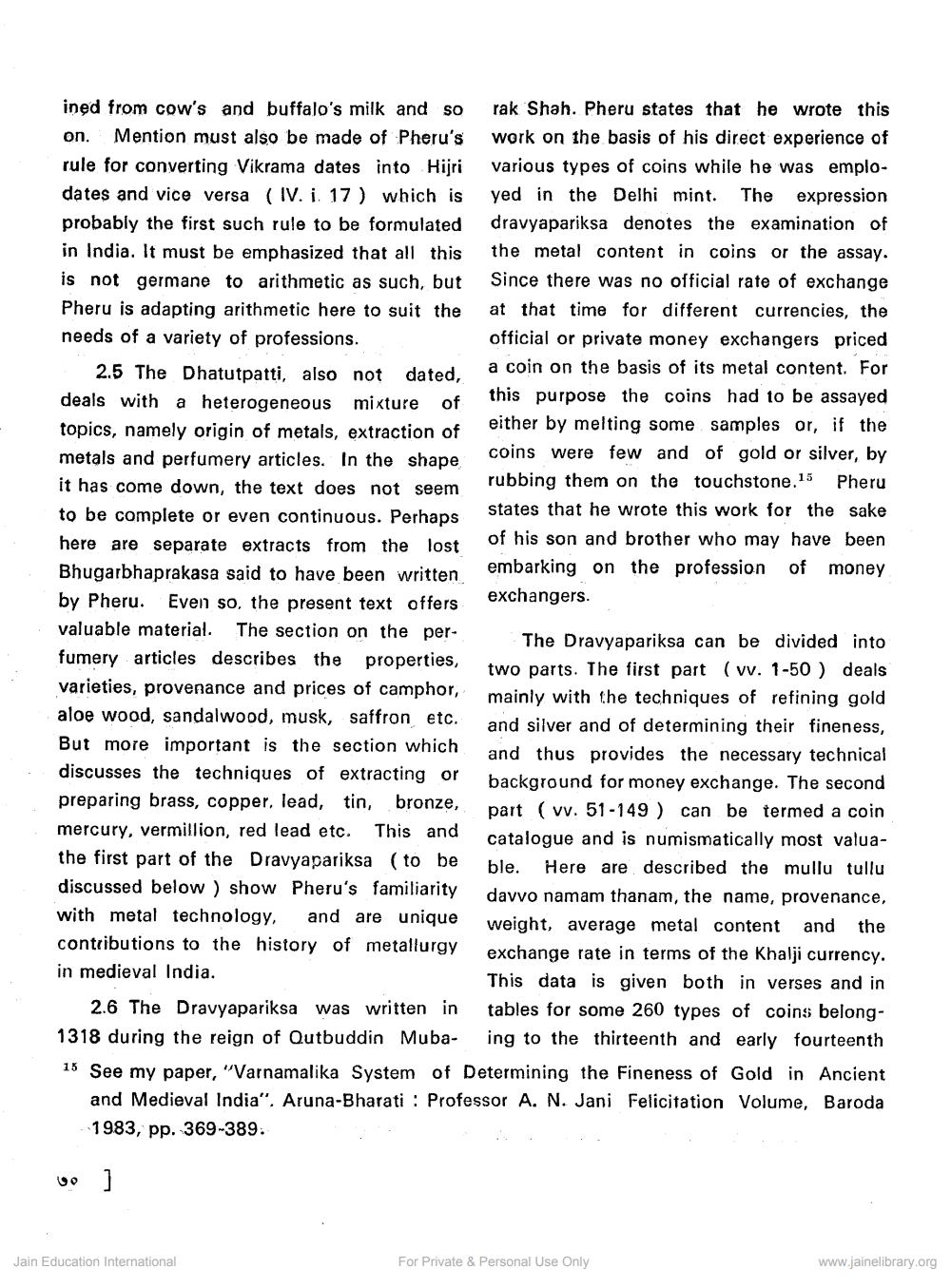Book Title: Thakkura Pheru and Popularisation of Science in India in 14th Century Author(s): Sreeramula Sarma Publisher: Z_Bhanvarlal_Nahta_Abhinandan_Granth_012041.pdf View full book textPage 8
________________ ined from cow's and buffalo's milk and so rak Shah. Pheru states that he wrote this on. Mention must also be made of Pheru's work on the basis of his direct experience of rule for converting Vikrama dates into Hijri various types of coins while he was emplodates and vice versa (IV. i. 17 ) which is yed in the Delhi mint. The expression probably the first such rule to be formulated dravyapariksa denotes the examination of in India. It must be emphasized that all this the metal content in coins or the assay. is not germane to arithmetic as such, but since there was no official rate of exchange Pheru is adapting arithmetic here to suit the at that time for different currencies, the needs of a variety of professions. official or private money exchangers priced 2.5 The Dhatutpatti, also not dated, a coin on the basis of its metal content. For deals with a heterogeneous mixture of this purpose the coins had to be assayed topics, namely origin of metals, extraction of either by melting some samples or, if the metals and perfumery articles. In the shape coins were few and of gold or silver, by it has come down, the text does not seem rubbing them on the touchstone.15 Pheru to be complete or even continuous. Perhaps states that he wrote this work for the sake here are separate extracts from the lost of his son and brother who may have been Bhugarbhaprakasa said to have been written embarking on the profession of money by Pheru. Even so, the present text offers exchangers. valuable material. The section on the per The Dravyapariksa can be divided into fumery articles describes the properties, two parts. The first part (w. 1-50 ) deals varieties, provenance and prices of camphor, mainly with the techniques of refining gold aloe wood, sandalwood, musk, saffron etc. and silver and of determining their fineness, But more important is the section which and thus provides the necessary technical discusses the techniques of extracting or background for money exchange. The second preparing brass, copper, lead, tin, bronze, part ( v. 51-149 ) can be termed a coin mercury, vermillion, red lead etc. This and catalogue and is numismatically most valuathe first part of the Dravyapariksa (to be ble. Here are described the mullu tullu discussed below ) show Pheru's familiarity davvo namam thanam, the name, provenance, with metal technology, and are unique weight, average metal content and the contributions to the history of metallurgy exchange rate in terms of the Khalji currency. in medieval India. This data is given both in verses and in 2.6 The Dravyapariksa was written in tables for some 260 types of coins belong1318 during the reign of Qutbuddin Muba- ing to the thirteenth and early fourteenth 15 See my paper, 'Varnamalika System of Determining the Fineness of Gold in Ancient and Medieval India". Aruna-Bharati : Professor A. N. Jani Felicitation Volume, Baroda 1983, pp. 369-389. Jain Education International For Private & Personal Use Only www.jainelibrary.orgPage Navigation
1 ... 6 7 8 9 10
